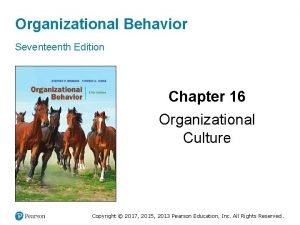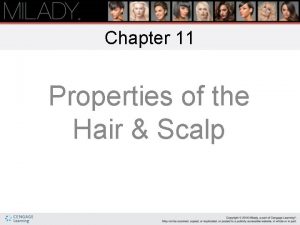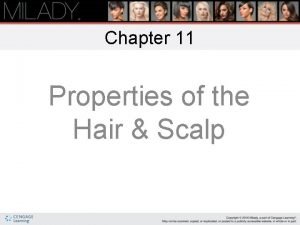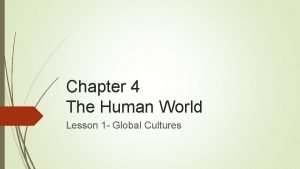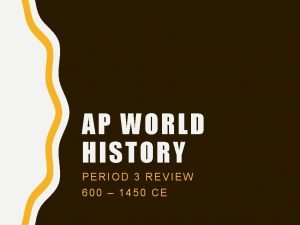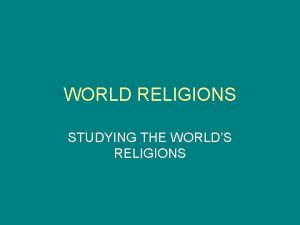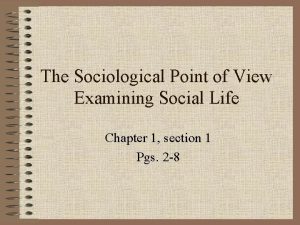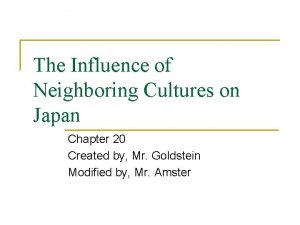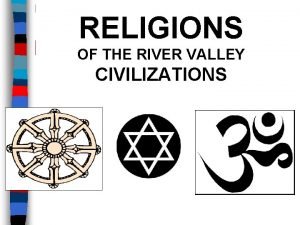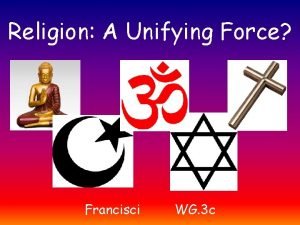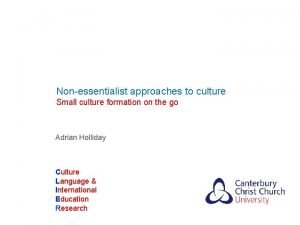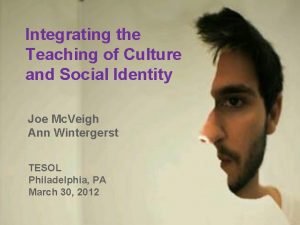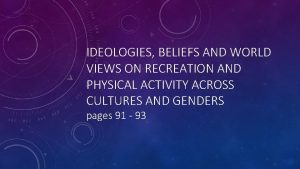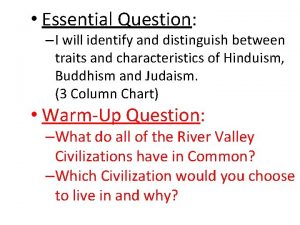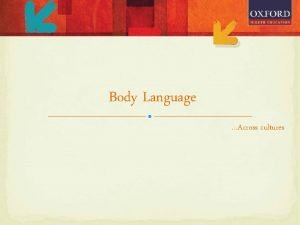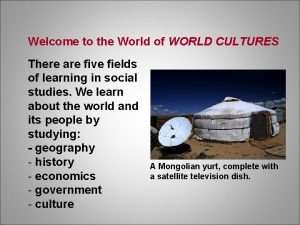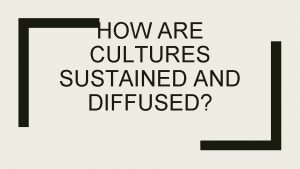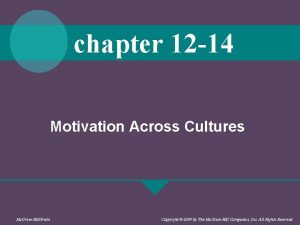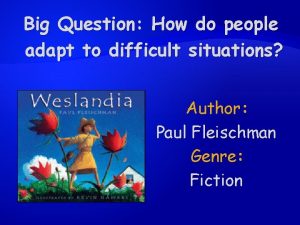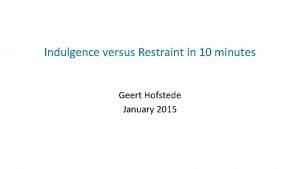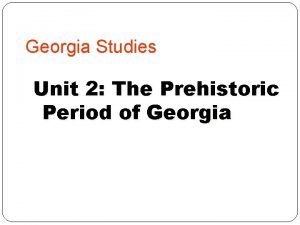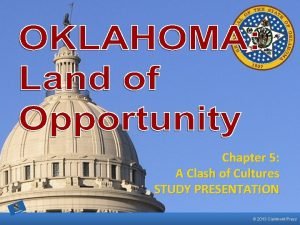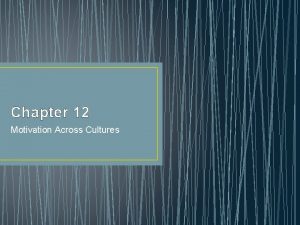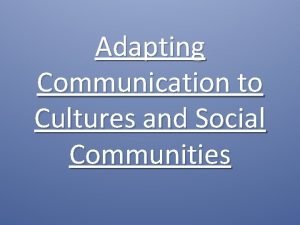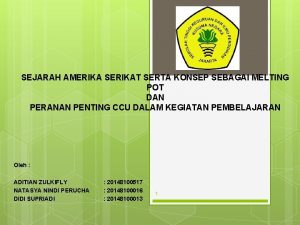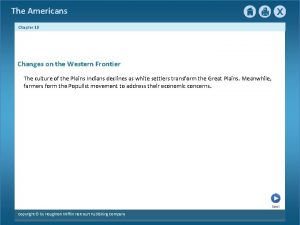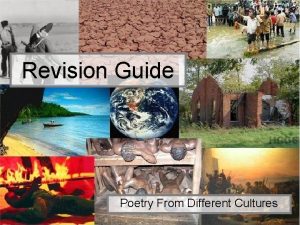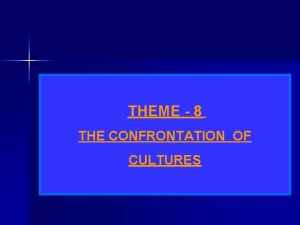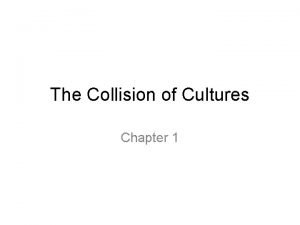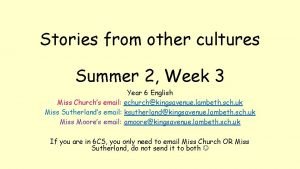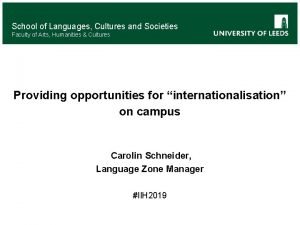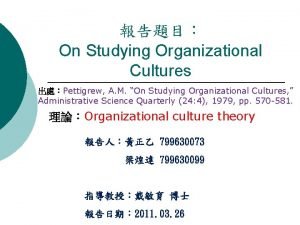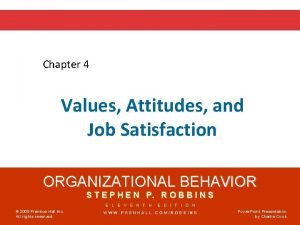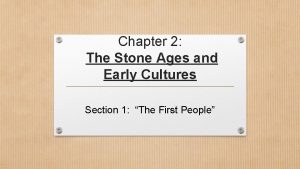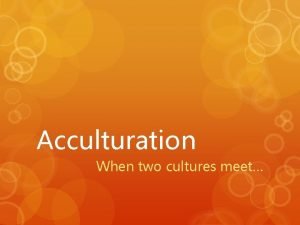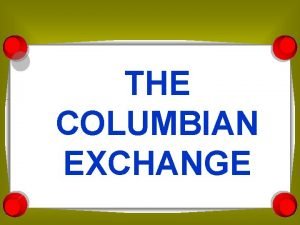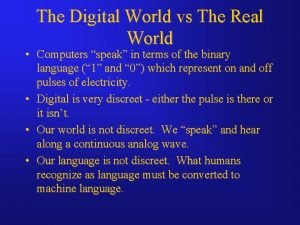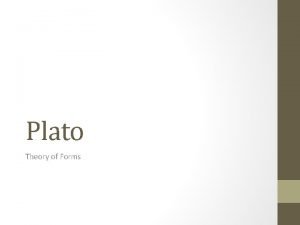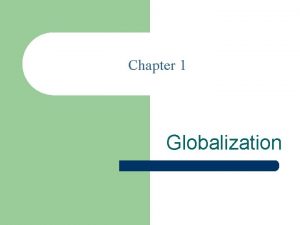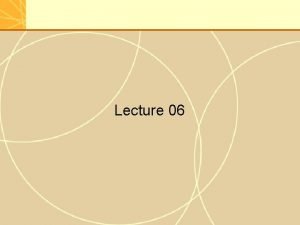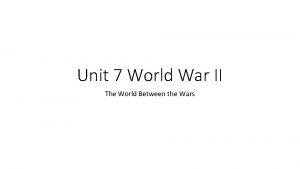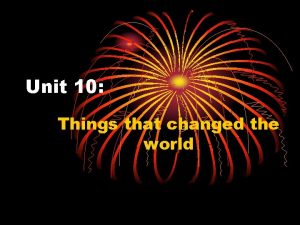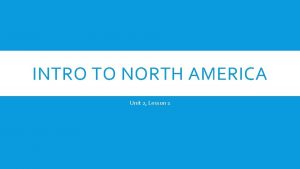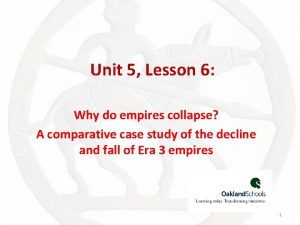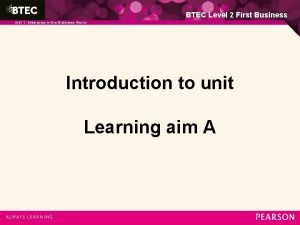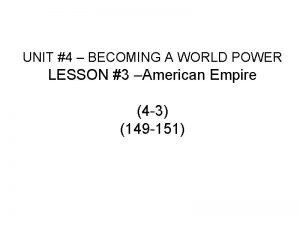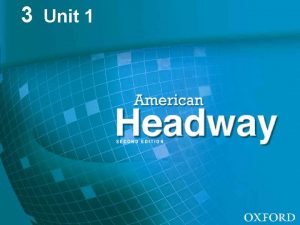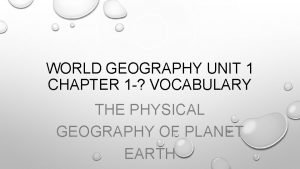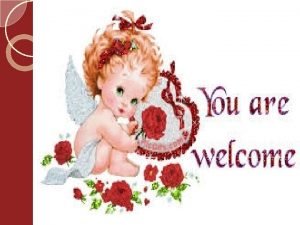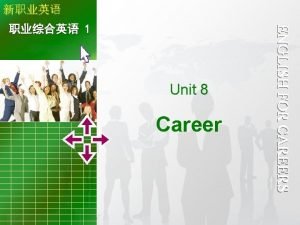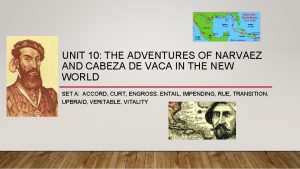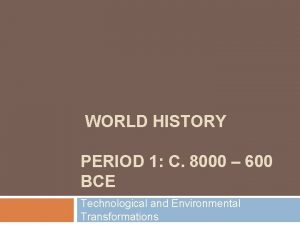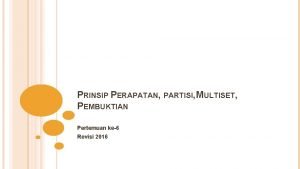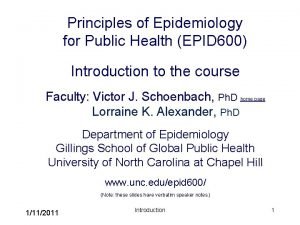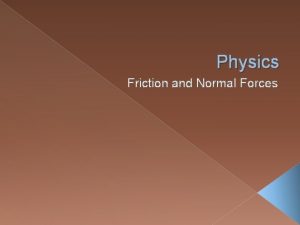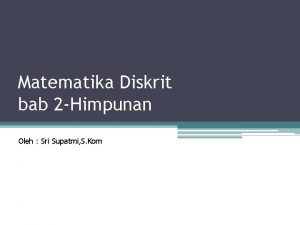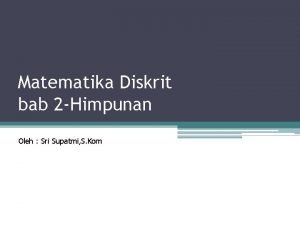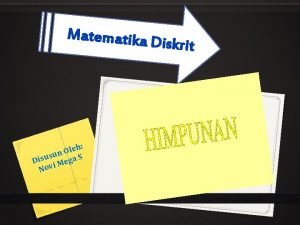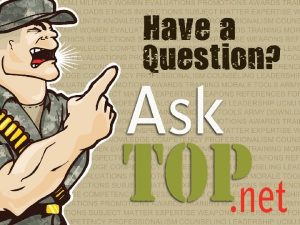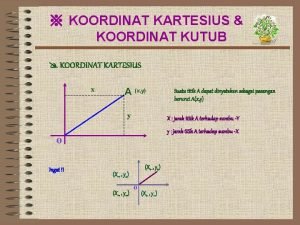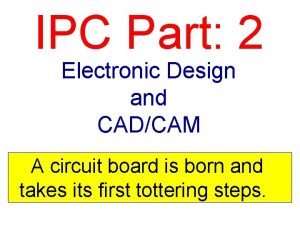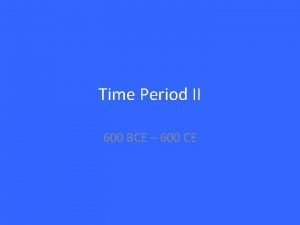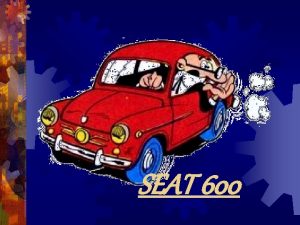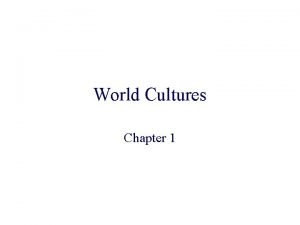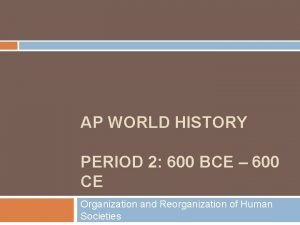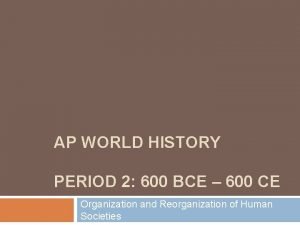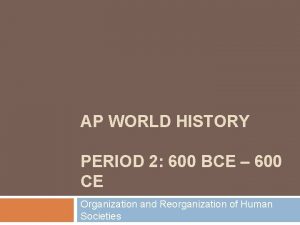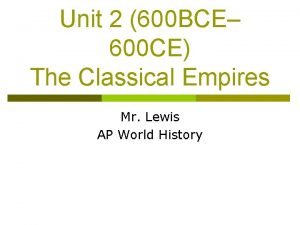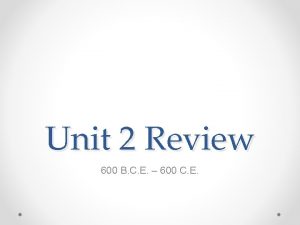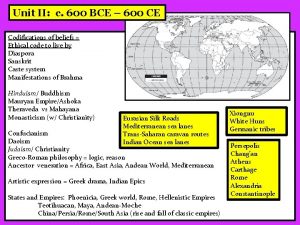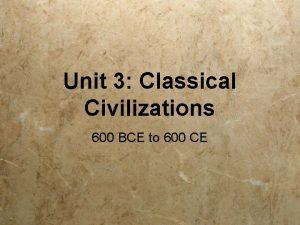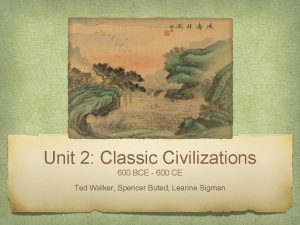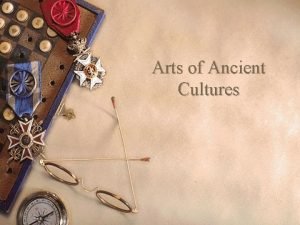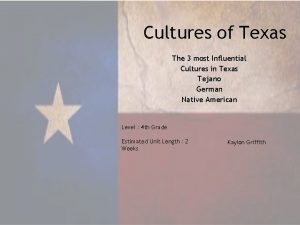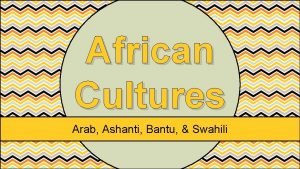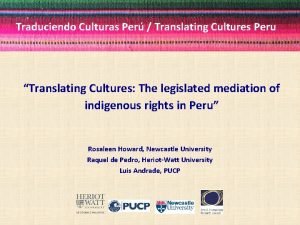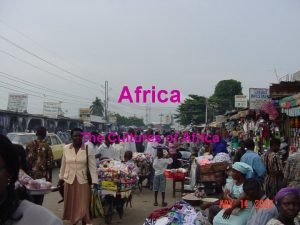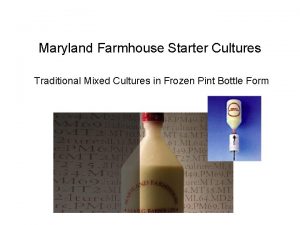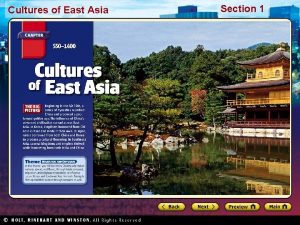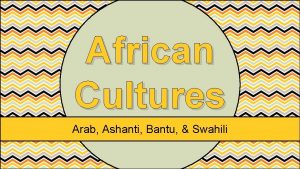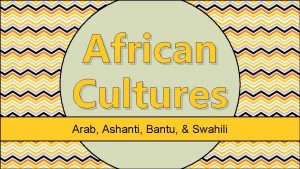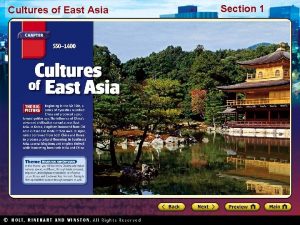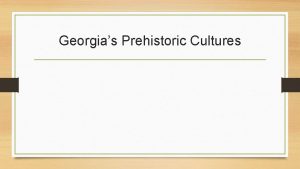Unit 2 World Cultures Maturing 600 C E


































![Medieval Roman Catholic Hierarchy Pope Archbishops & Cardinals [Advise Pope] Bishop [preside over large Medieval Roman Catholic Hierarchy Pope Archbishops & Cardinals [Advise Pope] Bishop [preside over large](https://slidetodoc.com/presentation_image_h2/5554ef51ede025a1ec2fa07f3105d665/image-35.jpg)

![Western Monarchies & the Eastern Frontier 3. Frankish Kingdom [Carolingian Empire] – One of Western Monarchies & the Eastern Frontier 3. Frankish Kingdom [Carolingian Empire] – One of](https://slidetodoc.com/presentation_image_h2/5554ef51ede025a1ec2fa07f3105d665/image-37.jpg)

![Western Monarchies & the Eastern Frontier 3. Frankish Kingdom [Carolingian Empire] – Kingdom weakens Western Monarchies & the Eastern Frontier 3. Frankish Kingdom [Carolingian Empire] – Kingdom weakens](https://slidetodoc.com/presentation_image_h2/5554ef51ede025a1ec2fa07f3105d665/image-39.jpg)
![Western Monarchies & the Eastern Frontier 3. Frankish Kingdom [Carolingian Empire] – The greatest Western Monarchies & the Eastern Frontier 3. Frankish Kingdom [Carolingian Empire] – The greatest](https://slidetodoc.com/presentation_image_h2/5554ef51ede025a1ec2fa07f3105d665/image-40.jpg)
![Western Monarchies & the Eastern Frontier 3. Frankish Kingdom [Carolingian Empire] – Charlemagne greatly Western Monarchies & the Eastern Frontier 3. Frankish Kingdom [Carolingian Empire] – Charlemagne greatly](https://slidetodoc.com/presentation_image_h2/5554ef51ede025a1ec2fa07f3105d665/image-41.jpg)



























































- Slides: 100

Unit 2: World Cultures Maturing 600 C. E. to 1450 C. E.

Europe During the Middle Ages & the Renaissance [500 C. E. to 1500 C. E. ] Barron’s Chp. 6 Strayer Chp. 10 (Middle Ages) Strayer Chp. 13 (Renaissance)

Timeline 1. European Middle Ages (500 CE – 1500 CE) – Phase 1 Early Middle Ages (500 – 1000 CE) • Political decentralization, backwardness – Phase 2 High Middle Ages (1000 – 1300 CE) • • Nations became defined, technology & culture improved European civilization evolved, strong Christian influence – Phase 3 Late Middle Ages (1300 – 1500 CE) • Black Death, Renaissance 2. Renaissance (1300 – 1600 CE) – Cultural Rebirth

Frankish Kingdoms Avar Kingdom Parhae Byzantine Empire Sassanid Empire Sui China Silla Yamoto Japan Harsha’ Empire Chalukya Ghana Axum States and Empires in 600 CE 4

European Origins • Resulted from the collapse of the Roman Empire (centralized authority) • Attacks by Germanic tribes

Europe in the 6 c

Feudalism & the Manor System Origins of Feudalism 1. After the fall of Rome, Europe became politically decentralized 2. No ruler was strong enough to provide Europe with central authority 3. European monarchs didn’t have the power, money, or military to govern their lands effectively

Feudalism & the Manor System Origins of Feudalism 4. Their solution was the feudal system 5. Under feudalism lords and monarchs would award land to loyal followers (vassals) 6. Vassals would promise their parcels of land (fiefs) would be governed, law & order dispensed, crops grown, and land protected

Feudalism & the Manor System Origins of Feudalism 7. Feudal Retainers – Vassals would subdivide their fiefs into smaller units – Vassals grant these units to people they could trust 8. Feudalism remained the heart of European politics for centuries

Feudalism Feudal Nobility 1. Those that received large retainers (land grants) from the monarch became Europe’s noble class 2. Social hierarchy – All members of feudal nobility were tied to the monarch by bonds of loyalty & landownership – Nobles provided political leadership

§ The social structure of Europe worked like this: Higher on the pyramid, more land a person owned Kings Lords and lesser kings Vassals: knights, Merchants, etc. Peasants and serfs

Feudalism Feudal Nobility 3. Feudal Military System – Cavalry • • Elite force of armed knights on horseback Horses & weapons very costly, only members of upper class could afford to become knights – Foot soldiers • • Recruited by nobles In war time lords/nobles would recruit serfs to fight as foot soldiers

Feudalism Feudal Nobility 4. Code of Chivalry – – – Medieval knights code of conduct They were to be virtuous Christian who served lord loyally Treated lower class with justice Gentlemanly toward women Reality… • • Chivalry did restrain extreme violent behavior Code often broken

The Road to Knighthood KNIGHT SQUIRE PAGE

The Medieval Manor 1. Basic unit of feudal landholding was the manor… – Includes lord’s residence (estate or castle) – Peasants’ village – Surrounding village & lords house were agricultural fields and woods where animals could be hunted (usually reserved for the lords) – Manors provided local structure but Isolated society

The Medieval Manor

Life on the Medieval Manor Serfs at work

Serfs 1. Economically, feudal system relied on the labor of peasants 2. Most peasants were serfs 3. Serfs paid fees to use lords facilities i. e. water mill, bread oven, black smith

Serfs 4. Serfdom defined… – Technically not slaves – Legally unfree – Could not change residence or job without permission – Work mostly benefits their lord – Portion of their own crops & livestock given to lord – Certain number of days/month labor for lord… 1. 2. 3. 4. Build roads Clearing forests Gathering firewood Farming lords private fields (most common)

Feudalism A political, economic, and social system based on loyalty and military service.

How Feudalism Changed Over Time 1. Feudalism was the political, economic, and social system of Medieval Europe. It was based on loyalty and military service. 2. It outlasted it’s original purpose. 3. After political units began to centralize & resemble nations, feudal practices remained in place.

How Feudalism Changed Over Time 4. What things began to change? – Knightly class evolved into aristocratic nobility – This class remained shaped European politics & society until 1800’s & early 1900’s – Change was very slow in central & eastern Europe…serfdom didn’t end in Russia until late 1800’s – Feudalism set into place class differences… • • • Haves = Rich & Powerful (nobility) Have Not’s = Poor & Powerless (Serfs, peasants) Tension grew which eventually lead to European nationalist revolutions (late 1700’s – early 1900’s)

Christendom Unifying Influence of Christianity 1. Primary unifying force in Europe after the fall of Rome was Christianity 2. Two major headquarters of Christianity… – Rome Western & Central Europe – Constantinople Eastern Europe, Greece, Middle East

Christendom Unifying Influence of Christianity 3. By 1045 CE, difference in geography and doctrine led to the Great Schism – Christianity separated into two churches Orthodox Catholic

Christendom Unifying Influence of Christianity 4. Roman Catholicism & Eastern Orthodoxy – Roman Catholic Church (Western & Central Europe) Roman Catholic Pope – Eastern Orthodox Church (Middle East, South Eastern Europe, Russia) Eastern Orthodox Patriarch

The Medieval Catholic Church v filled the power vacuum left from the collapse of the classical world. Gave rise to “Age of Faith” v Shaped medieval society in many ways… ü Preserved Latin & Greek manuscripts including: scientific essays, literary works, and a wealth of learning ü Provided Europeans with a common faith despite cultural differences

The Medieval Catholic Church v. Monasticism: § Religious communities whose members were called monks & nuns…not ordained priests. § Benedictine Order = 1 st European monasteries stressed contemplation & seclusion, poverty, chastity § provided schools for the children of the upper class.

The Medieval Catholic Church v Monasticism: § inns, hospitals, refuge in times of war. § libraries & scriptoria to copy books and illuminate manuscripts. § monks missionaries to the barbarians. [St. Patrick (Ireland), St. Boniface (Germany)]

A Medieval Monk’s Day

A Medieval Monastery: The Scriptorium • Scholasticism merged faith with reason - ala. Thomas Aquinas • Knowledge restricted by the Catholic Church

Illuminated Manuscripts

The Power of the Medieval Church v Head of Catholic Church is the Pope ü Governed huge amounts of territory in Italy v Popes had power to determine… ü Heresy proposing radical change to a belief system ü Excommunication excluding people from Catholic Church ü Issue Crusades holy wars

The Power of the Medieval Church v Medieval Popes goal ü Join European nations of Europe into a single Christian community known as Christendom ü Christendom would be governed by the Pope with kings & emperors subject to him ü Never fully achieved v Holy Inquisition ü In 1231 C. E. a set of special courts with wideranging powers begins to punish heresy & religious nonconformity

The Power of the Medieval Church v bishops and abbots played a large part in the feudal system. v the church controlled about 1/3 of the land in Western Europe. v tried to curb feudal warfare only 40 days a year for combat. vtithe 1/10 tax on your assets given to the church.
![Medieval Roman Catholic Hierarchy Pope Archbishops Cardinals Advise Pope Bishop preside over large Medieval Roman Catholic Hierarchy Pope Archbishops & Cardinals [Advise Pope] Bishop [preside over large](https://slidetodoc.com/presentation_image_h2/5554ef51ede025a1ec2fa07f3105d665/image-35.jpg)
Medieval Roman Catholic Hierarchy Pope Archbishops & Cardinals [Advise Pope] Bishop [preside over large territory and supervise priests] Priest [serves needs of individual community; men only] Monks & Nuns [members of religious community not ordained as priests]

Western Monarchies & the Eastern Frontier 1. It took several centuries after the fall of the Roman Empire for stable nations to form 2. Short-lived kingdoms quickly rose and fell during 500 + 600’s C. E. —many Viking & Muslim invasions
![Western Monarchies the Eastern Frontier 3 Frankish Kingdom Carolingian Empire One of Western Monarchies & the Eastern Frontier 3. Frankish Kingdom [Carolingian Empire] – One of](https://slidetodoc.com/presentation_image_h2/5554ef51ede025a1ec2fa07f3105d665/image-37.jpg)
Western Monarchies & the Eastern Frontier 3. Frankish Kingdom [Carolingian Empire] – One of Europe’s earliest kingdoms – Franks = German tribe who gain large empire under leader King Clovis (465 -511 CE) • Includes modern-day Germany, France, Netherlands – Clovis converted his empire to Catholicism

![Western Monarchies the Eastern Frontier 3 Frankish Kingdom Carolingian Empire Kingdom weakens Western Monarchies & the Eastern Frontier 3. Frankish Kingdom [Carolingian Empire] – Kingdom weakens](https://slidetodoc.com/presentation_image_h2/5554ef51ede025a1ec2fa07f3105d665/image-39.jpg)
Western Monarchies & the Eastern Frontier 3. Frankish Kingdom [Carolingian Empire] – Kingdom weakens after Clovis’s death but becomes powerful again under Charles Martel (688 -741 CE) – Martel was a skilled military leader who drove back Muslim invaders at the Battle of Tours (741) • Very influential battles of medieval Europe – Martel turns the Frankish empire into the Carolingian dynasty (732 CE) – Martel’s son Pepin strengthen the kingdoms ties with the Catholic Church.
![Western Monarchies the Eastern Frontier 3 Frankish Kingdom Carolingian Empire The greatest Western Monarchies & the Eastern Frontier 3. Frankish Kingdom [Carolingian Empire] – The greatest](https://slidetodoc.com/presentation_image_h2/5554ef51ede025a1ec2fa07f3105d665/image-40.jpg)
Western Monarchies & the Eastern Frontier 3. Frankish Kingdom [Carolingian Empire] – The greatest Carolingian ruler was Pepin’s son Charlemagne (Charles the Great) – Charlemagne ruled from 768 -814 CE – Defended Frankish territory from Viking & Muslim attacks
![Western Monarchies the Eastern Frontier 3 Frankish Kingdom Carolingian Empire Charlemagne greatly Western Monarchies & the Eastern Frontier 3. Frankish Kingdom [Carolingian Empire] – Charlemagne greatly](https://slidetodoc.com/presentation_image_h2/5554ef51ede025a1ec2fa07f3105d665/image-41.jpg)
Western Monarchies & the Eastern Frontier 3. Frankish Kingdom [Carolingian Empire] – Charlemagne greatly expands the empire, firmly transforming it into the Carolingian Empire – Carolingian Empire evolves into the Holy Roman Empire – This occurs when the pope crowns Charlemagne Holy Roman Emperor (800 CE)

Charlemagne’s Empire

Pope Crowned Charlemagne Holy Roman Emperor: Dec. 25, 800

Carolingian Artifacts

Western Monarchies & the Eastern Frontier 4. Holy Roman Empire under Charlemagne… – Active supporter of church sponsored education & culture – His empire was very strong & well organized

Western Monarchies & the Eastern Frontier 5. Collapse of Charlemagne’s Empire – 843 C. E. Charlemagne’s 3 grandsons divide the empire into smaller parts – The concept of “holy” and “Roman” survived… • • It was a viable state allied with the church Provided relative centralized authority

Western Monarchies & the Eastern Frontier 6. By the late 800’s – 900’s early nations began to emerge… – Capetian Dynasty gradually gains more control of France – Eastern realm of Charlemagne’s realm reformed itself as the Holy Roman Empire • Ruled most of central for centuries to come

The Vikings 1. Vikings were expert sailors & fierce warriors from Scandinavia 2. They helped shape early medieval European nations by raiding & conquering land throughout coastal Europe, down to the Mediterranean 3. They forced England, France, and Holy Roman Empire to defend against their attacks, prompting these nations to centralize power

England & France 1. England & France were the most stable Western European states during the Early Middle Ages 2. In 1066, William the Conqueror led Normans (Viking decedents in France) into England conquered it

England & France 3. William & his successors were connect to the French throne by blood. 4. This resulted in much confusion between England & France regarding who had right to rule

England & France 5. Results of Norman Conquest… – French & English cultures start merging – England becomes more centralized – However checks were put on monarchs power 1. English Common Law… 1100’s CE – Single law code & Jury system 2. Magna Carta… 1215 CE – – Guarantee nobility rights & privileges LIMITS MONARCHS POWER 3. Parliament…late 1200’s – Representative lawmaking body

Evolution of England’s Political System v Henry I: § William’s son. § set up a court system. § Exchequer dept. of royal finances. v Henry II: § established the principle of common law throughout the kingdom. § grand jury. § trial by jury.

Magna Carta, 1215 v King John I v Runnymeade v “Great Charter” v monarchs were not above the law. v kings had to consult a council of advisors. v kings could not tax arbitrarily.

The Beginnings of the British Parliament v Great Council: § middle class merchants, townspeople [burgesses in Eng. , bourgeoisie in Fr. , burghers in Ger. ] were added at the end of the 13 c. § eventually called Parliament. § by 1400, two chambers evolved: o House of Lords nobles & clergy. o House of Commons knights and burgesses.

Capetian France 1. Capetians originally only rule a small region of France 2. They continue centralizing their power by – Take over English controlled regions of France Aquitaine & Brittany – Control major economically important regions Flanders & Burgundy – Beat English in 100 years war

Capetian France Hugh Capet 1 st Capetian King 3. By mid 1400’s, Capetian monarchs convert France into one of the largest, most centralized nations of Europe 4. Unlike England, French monarchs have absolute power

100 Years War 1. War between England & France from 1337 – 1453 CE 2. 1 st part of war coincided with European Black Death and several social uprisings in England & France both factors probably contributed to long duration of war

100 Years War 3. England was winning until 1400’s when Joan of Arc aided the French King and drove English out of France – She was a peasant girl who led an army to defeat the British claiming divine intervention led to her success – Joan was caught by a Germanic group & sold to the British – They tried & burned her as a heretic in 1431; she was only 19 years old 4. War ended most tensions between English & French royal families.

Holy Roman Empire 1. A multicultural empire that dominated Central Europe 2. Established in the 900’s by Charlemagne’s heirs 3. Why call it Holy Roman Empire? – Holy Brings many peoples under Catholicism – Roman Large & powerful state (like Rome)

Holy Roman Empire 4. Social & Political characteristics…. – The Emperor & the Pope were suppose to share political power…they often clash more than they cooperated – Emperor’s power was weak • Empires powerful nobles chose Emperor…not a hereditary position – Very ethnically diverse population • German, Italian (Northern Italy only), Hungarian, Slavic

4. Social & Political characteristics…. – Empire consisted of almost 200 provinces (smaller kingdoms) by the mid-1300’s – By 1438 the Habsburg family gained control over the imperial throne and kept it until 1918 • Part of Holy Roman Empire evolves in Austrian-Hungarian Empire which collapsed after WWI

Spain & Portugal 1. During medieval era these nations were overtaken by Muslim invaders called Moors in 700’s 2. Reconquista – 200 year struggle to push Moors out of Spanish peninsula [1031 – 1200’s] – El Clid = famous Spanish general who helps defeat the Moors – By 1200’s, Moors push to southern part of peninsula (Granada) – 1492, Ferdinand & Isabella expel Moors from Spain completely

Spain & Portugal 3. Centralization occurs slowly…after Moors are kicked out each territory remained independent 4. By late 1400’s, Ferdinand of Aragon & Isabella of Castile, rulers of the largest kingdoms in Spain, marry 5. This allows Spain to form into a single country

Spain & Portugal 6. Inquisition – Muslim invasion & subsequent Reconquista cause Catholic authorities to be very hostile to nonbelievers – Muslims & Jews (who Moors welcomed to Spain) were persecuted – By late 1400’s they are forced to convert to Catholicism or leave Spain

Judas Chair was used during the Spanish Inquisition to slowly impale victim

Byzantium Empire & Eastern Europe 1. Eastern Roman Empire became the Byzantine Empire in 476 C. E. 2. One of the most centralized empires of the medieval era – Constantinople was capital & trading center 3. Crossroads between Christian Europe & Islamic Middle East – Important center of trade – Silk Road links Europe & Middle East to China & India

Fall of Byzantium Empire 1. Despite major cultural & economic advancements, Byzantium entered a long period of decline. 2. By 1453, Ottoman Turks seized Constantinople and destroyed the empire. 3. The Turks created the Ottoman Empire, renaming the capital city Istanbul 4. Ottoman’s clashed with Holy Roman Empire (later Austrian Empire) over territory in S. E. Europe for centuries to come.

Eastern Europe 1. Eastern Europe was politically decentralized during the medieval era thanks to constant invasions from Mongols (1200’s), Ottomans (after 1400’s) 2. Exceptions to this were Poland, Hungary, and Sweden they were relatively stable & sophisticated

Eastern Europe 3. Russia was very destabilized – during medieval era it was governed by warring princes. – Mongols invaded in 1240’s and placed region under control of Golden Horde. – Finally, BY 1400’S Russia became free (Czar’s control Russia)

The Crusades 1. A religious war fought by Christians for the purpose of defending the faith. Most often "The Crusades" refers to a series of wars, at least eight, fought between 1071 through the next 200 years (1291).

The Crusades 2. Begun by Pope Urban II who was responding to a plea to save the Byzantine Empire (religious "cousins" of Roman Catholics) who were helplessly watching their empire being taken over by Muslim peoples. – Council of Clermont = Organized by Urban II, he officially calls upon Catholic knights of Europe to retake Jerusalem and the Holy Land from the Turks

The Crusades 3. Christians were shocked at their "Holy Land" being taken over by Muslims 4. Western European Christians responded for a variety of reasons including: – – Pope Urban promised an indulgence Landless peasants were promised they could keep part of any land they conquered – Greed - Lure of capturing wealth of "infidels" – Adventure – most serfs had never been off their manor

The Crusades 5. Many Popes supported the crusades for religious and political reasons. – Prevent Islamic control of Jesus' birthplace – Keep "holy Land" open for pilgrimages – Check power of European nobles who were centralizing power by sending them thousands of miles away – Reestablish control over Eastern Orthodox Catholics

Results of the Crusades 1. Temporary control was reestablished by Crusaders in the Levant. However it was short -lived. Muslims led by Saladin soundly defeated the ill-prepared Europeans by using better technology and fighting on their own turf. 2. Most of the Crusades were bloody carnages that settled little but leave a lasting distrust between Muslims and Christians.

Results of the Crusades 3. Advanced Islamic technology and culture were in demand by Europeans 4. Decrease in power of the Popes who were suspected of material rather than religious motives. Increase power of European kings and greater secularization.

Birth of Commercial Revolution Banking, Trade, Urbanization Population Growth, Trade, Commerce 1. Advanced agricultural techniques, like the 3 field system of crop rotation and better plows, cause food supplies to increase. 2. This creates a population boom [1000 – 1300 CE]

Birth of Commercial Revolution Banking, Trade, Urbanization Population Growth, Trade, Commerce 3. Growth of trade & commerce – Political stability allow banking and transporting goods safer and more convenient – Markets are created [places/regions where buying & selling of goods occurs]

Birth of Commercial Revolution Banking, Trade, Urbanization Population Growth, Trade, Commerce 4. Growth of commerce & trade help foster creation of major European trade routes – Trade easier by water so routes follow rivers & coastlines – Mediterranean trade focused on Italy & helped connect Europe to Middle East – Other famous routes include Rhine River, North Sea, English Channel, and Baltic Sea

Birth of Commercial Revolution Banking, Trade, Urbanization Population Growth, Trade, Commerce 4. Growth of commerce & trade help foster creation of major European trade routes – Hanseatic League • • Baltic Sea trade dominated by this group Its influence stretched from England to Russia – Banking makes trade feasible & dependable

Birth of Commercial Revolution Banking, Trade, Urbanization 1. Most people in medieval Europe lived in country and worked as peasants or serfs 2. However, increasing numbers of people start moving to cities 3. Regions where strong trade existed saw major urban growth especially Italy

Birth of Commercial Revolution Banking, Trade, Urbanization 4. What do cities have to offer? – Attract artists, writers, trades people, laborers – Freedom from feudal obligation • • Live in city for 1 year + 1 day = free from serfdom Common saying “city air makes you free”

Birth of Commercial Revolution Banking, Trade, Urbanization 4. What do cities have to offer? – Guilds • • Skilled trade workers organize guilds (labor groups) They maintained monopoly on their trade by restricting membership, est. prices, set quality standards & fair practices, create pensions

Birth of Commercial Revolution Banking, Trade, Urbanization 4. Characteristics of cities… – Crowded – Polluted – Poverty – Chance to gain wealth – Cultural opportunities

Social Stress in Late Medieval Period 1. Growing social stress occurs throughout 1300 to 1500’s due to uprisings & revolts 2. Why revolt? – Cooling of environment (referred to as the “Little Ice Age”) destroys harvests – Peasants forced into military service • Especially during the 100 years war – Common people (peasants and city dwellers) were heavily taxed – Religious disagreements sometimes led to rebellions late 1400’s

Black Death • Popular name for the bubonic plague • Arrived in Europe around mid 1300’s • One of, if not the, greatest medical disasters of European history • After killing millions in China, it traveled to the Middle East • Arrived in Sicily in 1347

Black Death • • • 1347 – 1348 plague destroyed southern Europe 1349 – 1350 it spreads to central Europe & British isles 1351 – 1352 it spread to Russia & Scandinavia Initially the plague killed 25 to 30 million people (1/3 population of Europe) Plague reappeared in Europe for several centuries—was not nearly as bad as the 1 st

Victims of the Black Death Bubonic plague is the best known manifestation of the bacterial disease plague, caused by the Gram-negative bacterium Yersinia pestis (formerly known as Pasteurella pestis). It belongs to the family Enterobacteriaceae. The term "bubonic plague" was often used synonymously for plague, but it does in fact refer specifically to an infection that enters through the skin and travels through the lymphatics, as is often seen in fleaborne infections. Bubonic plague kills about half of infected patients in 3– 7 days without treatment, and is believed to be the Black Death that swept through Europe in the 1340 s, killing tens of millions. [1] Still found in certain parts of world—Africa, Asia, South America.

Women in Medieval Europe • • Freedom and rights depended largely on social statues Cared for household & assisted with farmwork Women of low birth also worked as servants for upper-class They had some property rights – Could own & inherit land property • • Received dowries Could separate from husband but divorce was very difficult (illegal under Catholicism)

Women in Medieval Europe • • • Protect but not equality under the law Could become nuns not priests in Catholic & Eastern Orthodox Church Most nuns were from aristocracy – Noble families had to pay dowries (including land) to potential husbands – Many could not afford to marry off all their daughters

Women in Medieval Europe Women with Intellectual Pursuits Became Nuns • Hildegard of Bingen (1098 -1179) – Celebrated writer & song writer Women in Politics • Eleanor of Aquitaine (1122 – 1204) – Marries Louis VII of France, then Henry II of England – Gained much influence politically in both countries

Romanesque Architectural Style e Rounded Arches. e Barrel vaults. e Thick walls. e Darker, simplistic interiors. e Small windows, usually at the top of the wall.

Gothic Architectural Style e Tall e Slender spires e Large stained-glass windows e ornate carvings e flying buttresses

Carcassonne: A Medieval Castle

Parts of a Medieval Castle

The Printing Press 1436 -1437 • New Invention revolutionized Europe called the moveable-type printing press • Designed by Johannes Gutenberg • Ancient China – 1 st to develop block printing— carved images on blocks of wood – Very costly • Gutenberg’s Printing Press – Individual reusable metal characters placed into a frame to form text

Impact of Printing Press • • • Raised literacy rates Spread information Increased impact of new ideas & scientific theories Encouraged expansion of libraries & universities Played major role in… 1. Renaissance 2. Protstant Reformation

The Renaissance 1300 - 1600 Defined 1. Cultural and intellectual revival 2. Began in southern Europe Italian city-states in 1300’s 3. This revival eventually comes to be known as the “rebirth” or Renaissance 4. Historians have a much better appreciation of medieval culture, therefore the Renaissance is now thought of as a gradual cultural / intellectual evolution

The Renaissance 1300 - 1600 Causes—Why does it start in Italy? • Italy consisted of several sophisticated urban city-states • Commercial strength of these city-states – Generated much wealth – Rich merchants wanted to increase their social status so they sponsored artists & writers

The Renaissance 1300 - 1600 Causes—Why does it start in Italy? • Italy very successful center for trade & commerce between Europe & Middle East

The Renaissance 1300 - 1600 Famous Figures of Renaissance • • • Medici Family – Italian merchant family of Florence – Very wealthy, major patron of the arts Giovanni Boccaccio 1313 -1375 – Famous author Niccolo Machiavelli 1469 -1527 – Political philosopher Leonardo da Vinci 1452 -1519 – Artist & scienctist Micheangelo 1427 -1564 – Painter & sculptor
 Organizational cultures often reflect national cultures
Organizational cultures often reflect national cultures The maturing process of hair is:
The maturing process of hair is: Three types of side bonds
Three types of side bonds Sudut istimewa
Sudut istimewa The human world lesson 1 global cultures
The human world lesson 1 global cultures Period 3 ap world history
Period 3 ap world history Unit 10, unit 10 review tests, unit 10 general test
Unit 10, unit 10 review tests, unit 10 general test Subcultures
Subcultures Which cultures believe in reincarnation
Which cultures believe in reincarnation What is sociology perspective
What is sociology perspective The influence of neighboring cultures on japan
The influence of neighboring cultures on japan Judaism founder
Judaism founder Slidetodoc.com
Slidetodoc.com Which cultures believe in reincarnation
Which cultures believe in reincarnation Small culture
Small culture Taste different cultures
Taste different cultures Types of cultures
Types of cultures Individualistic culture definition
Individualistic culture definition Personal sense of identity
Personal sense of identity Recreational activities across cultures and genders
Recreational activities across cultures and genders Which cultures believe in reincarnation
Which cultures believe in reincarnation All cultures undergo
All cultures undergo Communicating across cultures ppt
Communicating across cultures ppt Body language across cultures respuestas
Body language across cultures respuestas How many cultures are there
How many cultures are there How are local cultures sustained
How are local cultures sustained High-context cultures emphasize nonverbal messages.
High-context cultures emphasize nonverbal messages. Chapter 20:3 puncturing the skin to obtain capillary blood
Chapter 20:3 puncturing the skin to obtain capillary blood Motivation in different cultures
Motivation in different cultures Words from many cultures weslandia answers
Words from many cultures weslandia answers Bacterial growth
Bacterial growth Pengertian transmisi budaya
Pengertian transmisi budaya Restraint indulgence
Restraint indulgence Georgia's prehistoric cultures chart
Georgia's prehistoric cultures chart Chapter 5 a clash of cultures
Chapter 5 a clash of cultures Motivation across cultures
Motivation across cultures Social communities include a number of cultures
Social communities include a number of cultures Atakapans
Atakapans Why is america called a melting pot
Why is america called a melting pot Culture pure
Culture pure What impact did nearness to the sea have on greece
What impact did nearness to the sea have on greece Cultures and organizations software of the mind
Cultures and organizations software of the mind Chapter 13 section 1 cultures clash on the prairie
Chapter 13 section 1 cultures clash on the prairie Adjectives to describe cesar chavez
Adjectives to describe cesar chavez Poetry from different cultures
Poetry from different cultures Motivation across cultures
Motivation across cultures Knorr cetina epistemic cultures
Knorr cetina epistemic cultures Confrontation of cultures
Confrontation of cultures The collision of cultures chapter 1
The collision of cultures chapter 1 Zahra literacy shed
Zahra literacy shed Tandem language
Tandem language Edgar schein 3 levels of culture
Edgar schein 3 levels of culture Values attitudes and job satisfaction
Values attitudes and job satisfaction Folk culture and popular culture venn diagram
Folk culture and popular culture venn diagram The stone ages and early cultures
The stone ages and early cultures What happens when different cultures meet
What happens when different cultures meet Primate characteristics
Primate characteristics Did pumpkins come from the new world or old world
Did pumpkins come from the new world or old world Real world vs digital world
Real world vs digital world What is world of forms
What is world of forms Ap world history chapter 25 africa and the atlantic world
Ap world history chapter 25 africa and the atlantic world The changing world output and world trade picture
The changing world output and world trade picture Countries michael jackson visited
Countries michael jackson visited The paper seeming boy with red eyes mean the boy is
The paper seeming boy with red eyes mean the boy is An elementary school classroom in a slum figures of speech
An elementary school classroom in a slum figures of speech English 9 unit 9
English 9 unit 9 The changing world output and world trade picture
The changing world output and world trade picture Unit 7 the world between the wars
Unit 7 the world between the wars Unit 10 things that changed the world
Unit 10 things that changed the world Unit 2 around the world
Unit 2 around the world World geography unit 9 lesson 1
World geography unit 9 lesson 1 Unit 5: lesson 6 - review questions
Unit 5: lesson 6 - review questions Unit 5 material world
Unit 5 material world Unit 9: cities of the world
Unit 9: cities of the world Lesson outline climates of earth
Lesson outline climates of earth Business unit 1
Business unit 1 World geography unit 1 test
World geography unit 1 test World history unit 4 lesson 3
World history unit 4 lesson 3 Unit 2 colour my world
Unit 2 colour my world Unit 1 auxiliary verbs
Unit 1 auxiliary verbs World geography unit 1 vocabulary
World geography unit 1 vocabulary Unit 1 diversity in the living world
Unit 1 diversity in the living world English for your career 1
English for your career 1 New world unit 10
New world unit 10 90 ın yüzde 25'i kaçtır
90 ın yüzde 25'i kaçtır Ysi 600 oms
Ysi 600 oms 8000/600
8000/600 Dts
Dts Emc 1200 alh
Emc 1200 alh Contoh soal partisi himpunan
Contoh soal partisi himpunan Epid 600 unc
Epid 600 unc Acrastrip 600
Acrastrip 600 Fs max physics
Fs max physics Contoh perkalian kartesian
Contoh perkalian kartesian Himpunan
Himpunan Diagram venn kucing singa anjing
Diagram venn kucing singa anjing Ejercicios con numeros romanos
Ejercicios con numeros romanos Army regulation 600-8-10 paternity leave
Army regulation 600-8-10 paternity leave Koordinat kartesius dari titik c(4, 600) adalah....
Koordinat kartesius dari titik c(4, 600) adalah.... Pemanasan senyawa xy3 pada suhu 600 derajat celcius
Pemanasan senyawa xy3 pada suhu 600 derajat celcius Ipc-2615
Ipc-2615
